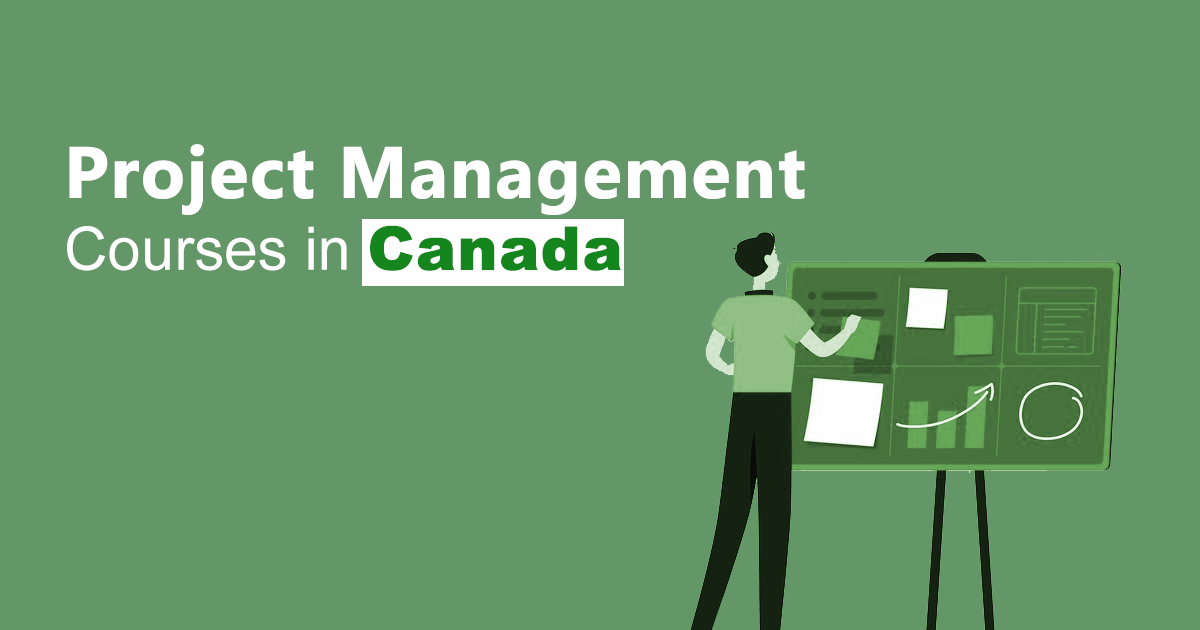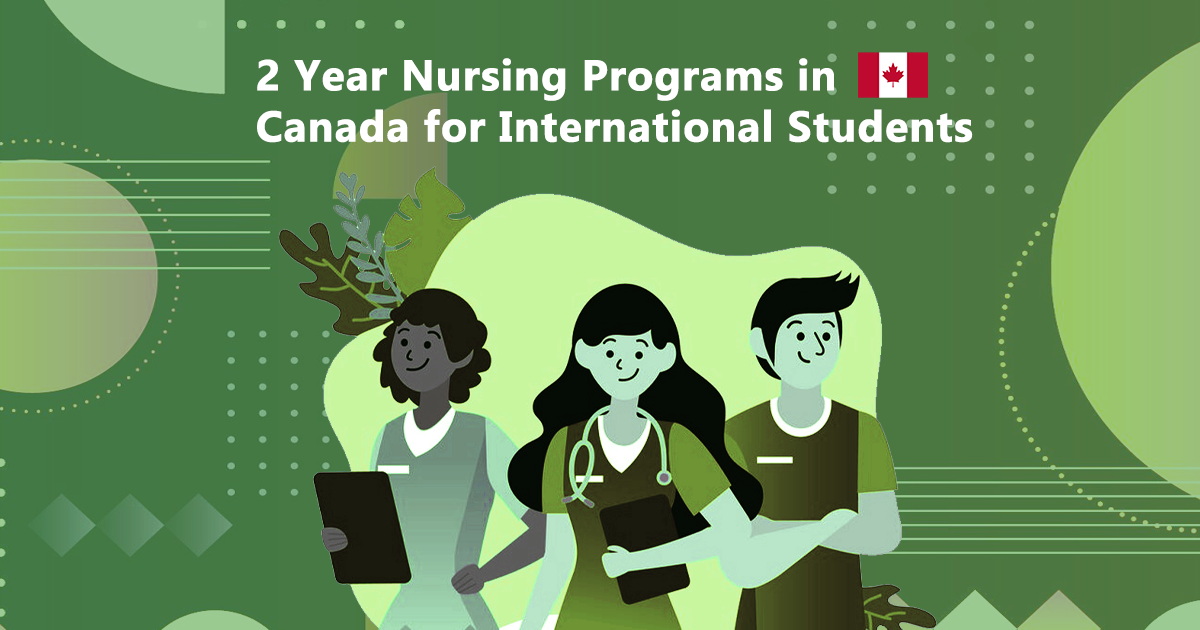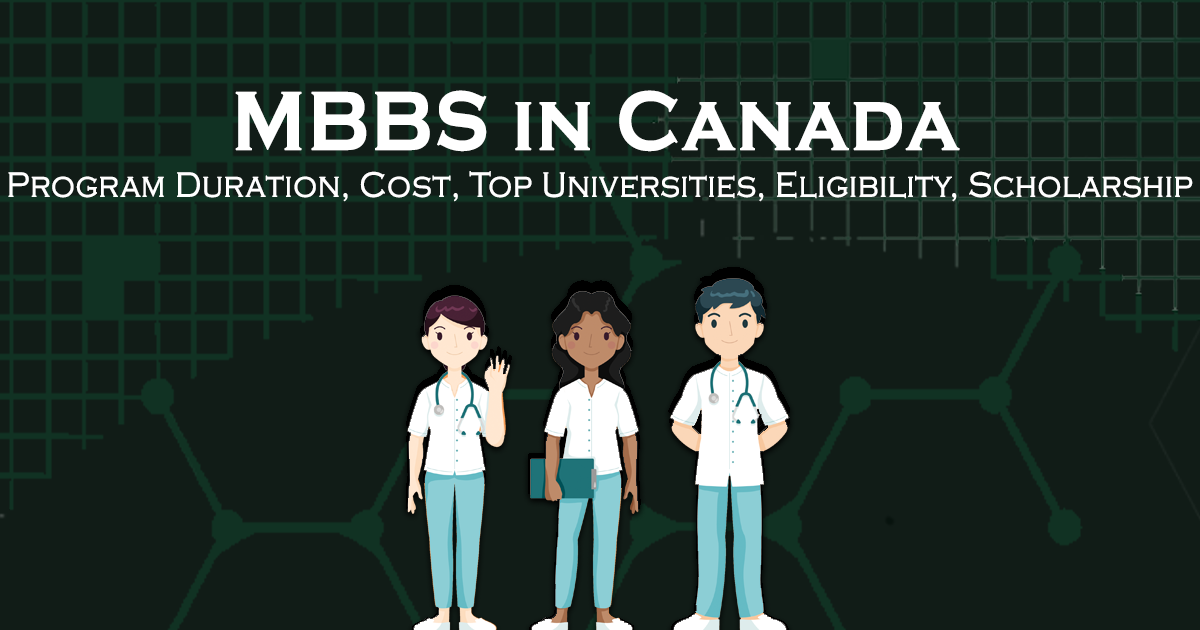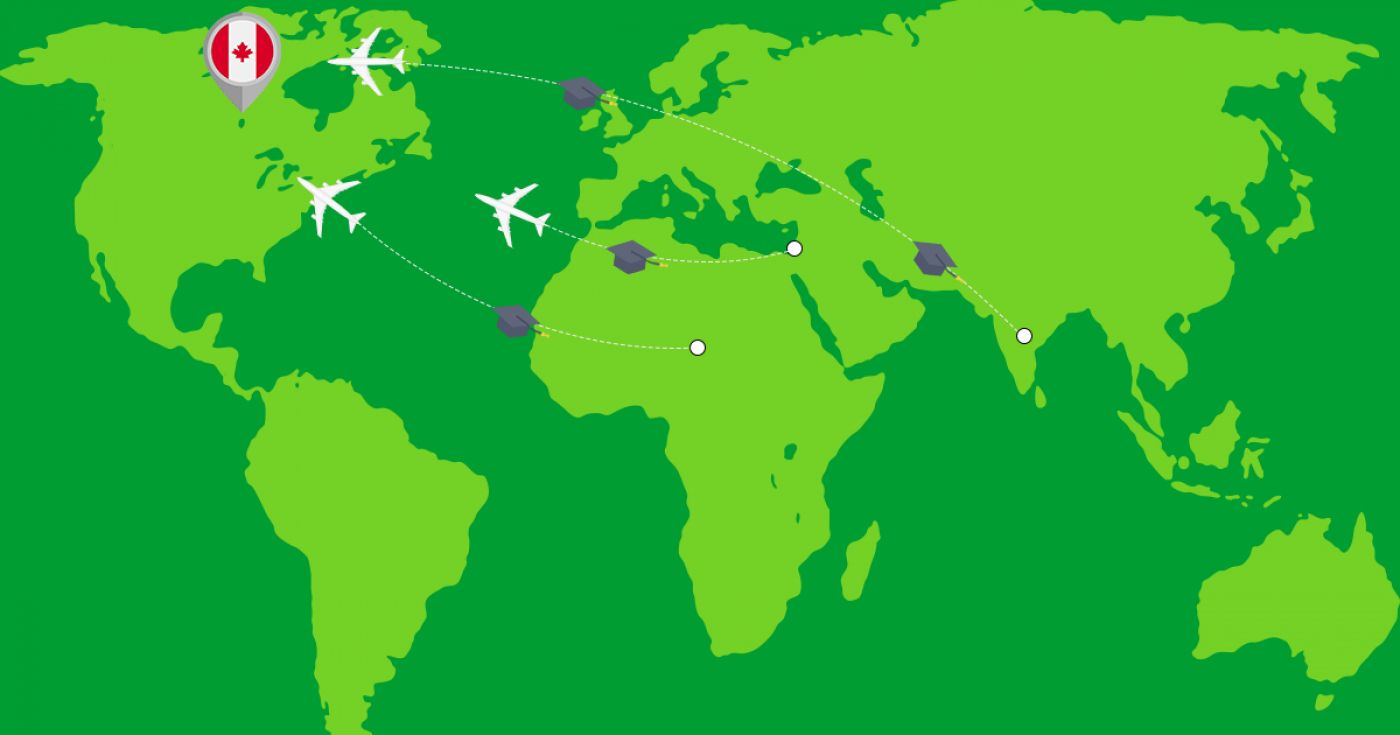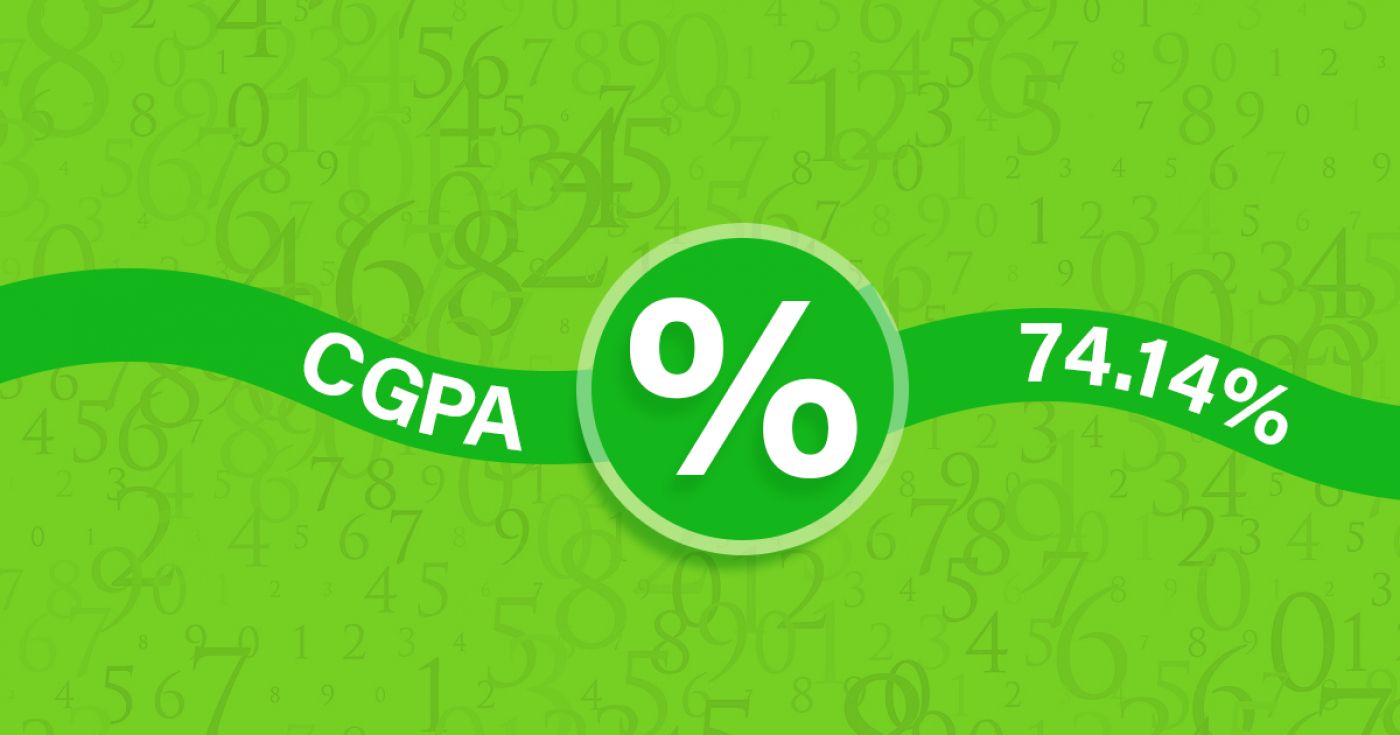Diploma in Business in Accounting
at Humber College North Campus Canada
Overview
Humber’s Business – Accounting diploma program provides you with a well-rounded accounting education with training in accounting procedures and theory, taxation, business law, information systems, and management. Supported by our state-of-the-art Accounting Centre, you’ll learn best practices in accounting and become skilled at using industry-standard software including Profile (personal tax), Access, Excel, Quickbooks, SAGE 50 Accounting (formerly known as Simply Accounting) and SAGE Accpac Plus.
You will learn accounting from industry-connected faculty who are committed to providing you with practical, hands-on accounting training to help you get ahead. Our program’s versatile range of courses helps you develop broad-based business skills including human resource administration, business writing, macroeconomics and finance. At any time, you can transfer to the three-year Business Administration – Accounting advanced diploma program, with an optional co-op opportunity.
You may choose to study for four consecutive semesters if you wish to accelerate your path to graduation.
30
Application Processing Days
Under Graduate
Program Level
Fact & Figures
Full Time On Campus
Study Mode
24
Duration
Humber College North Campus
Location
Diploma in Business in Accounting Assistant Fee
$16394
Tuition Fee
$12000
Average Cost of Living
$75
Application Fee
Diploma in Business in Accounting Admissions Requirements
- Minimum Level of Education Required: To be accepted into this program, applicants must have Grade 12 / High School Diploma or equivalent including the following required course(s):
- Grade 12TH English and Mathematics (or equivalent)

Get superfast admissions at top Diploma in Business in Accounting institutes in 2024
Benefits of choosing
➤Admission’s guaranteed at Top institutes across the world.
➤Enjoy exclusive application fee waiver’s with Edmissions.
➤Unlimited FREE Counselling sessions with Edmission’s
Experts
➤Get Tips from industry veterans to crack the IELTS exam in 1
week.
➤Assistance with scholarships, loans, forex, student accommodation and visa guidance.
Work Permit Canada
Students who wish to work in Canada require a work permit to do so. A student in Canada can work part-time during the course of his studies and full-time during holidays and semester breaks and post the completion of their course/program.
Rules for getting a part-time work visa in Canada
You can also work part-time on campus at your university.
Work Permit
Duration
Your part-time work permit will be valid for as long as you have a valid study permit.
Working Hours
20 Hours/Week
As a full-time student, you can work for a maximum of 20 hours a week. However, you can work full- time during holidays and breaks.
Document Required to Work in Canada
List
To apply for a work permit, you will need a study permit that mentions that you are allowed to work part-time on campus.
Social Insurance Number
Study Permit
You will need a Social Insurance Number (SIN) to Service Canada. if you wish to work in Canada during the course of your studies. To apply for the same, you need a valid study permit, and you should be a full- time student at a recognized university.

You can work part-time off-campus if you are studying in the Quebec province.
Duration of Work Permit Canada
Your part-time work permit will be valid for as long as you have a valid study permit.
Work Hours Canada
As a full-time student, you can work for a maximum of 20 hours a week. However, you can work full- time during holidays and breaks.
Document Required to Work in Canada
To apply for a work permit, you will need a study permit that mentions that you are allowed to work part-time on campus.
Social Insurance Number
You will need a Social Insurance Number (SIN) to Service Canada if you wish to work in Canada during the course of your studies. To apply for the same, you need a valid study permit, and you should be a full- time student at a recognized university.
Working after completing your course
In Canada, you will need a work permit to get a full-time job in Canada after finishing your studies. You chose a work permit like the Post-Graduation Work Permit (PGWP) if you wish to stay back in Canada and work full-time.
Visit Government of Canada Website for more detail
Post-Graduation Work Permit (PGWP)
The Post- Graduation Work Permit (PGWP) allows you to work for three years in Canada if you have completed a two years degree or more.
Application
how can i apply
You can either apply online or download the form and mail the application along with the required documents. Pay your fee and then wait for the decision to come.
Application Documents Required
List
To apply for the work visa, you need a degree from a recognized and accredited Canadian University along with an intention to stay and work in Canada only temporarily.
When to Apply?
One can apply for the full-time work permit in the first three months post the completion of their course during which the study permit is still valid.
How long does it take?
90 days
You will have to wait for 90 days for the decision on your work permit.
Duration
3 Years
The work permit is valid for 3 years if you have completed a two years degree program or more.
Fees
CAD 255
The fee for the work permit is CAD 255 plus the holder fee and the work permit processing fee.
Monthly Wages
CAD 1,600
An applicant is guaranteed a minimum salary of CAD 1,600 per month while working in Canada. This amount though varies on the job and the province you are working in.
Work Hours Canada
No Limit
There is no maximum limit, and you can work for as many hours as you want on the full-time work permit.

Required Documents
List
To apply for the work visa, you will need the following documents:
- Forms: IMM 5710, IMM 5476 and IMM 5475;
- Graduation Proof
- Proof of payment of work permit fees
- Copies of your travel and identification documents, passport pages and current immigration document.
Till a decision is made on your work visa, you can continue to work full time. All you need to have is your completed degree, should have applied for the permit before the expiry of your study permit and you should be allowed to work off-campus.
Information
Disclaimer
The information provided about the work permit is true and complete to the best of our knowledge. All recommendations are made without any guarantee on the part of the author or the publisher. The author and the publisher, therefore, disclaim any liability in connection to and with the use of this information.
Detailed Program and Facts
30
Application Processing Days
Full Time On Campus
Program Intensity
Under Graduate
Program Level
24
Duration
Study Visa
Student Visa For Canada
Any student who wishes to study in Canada requires a student visa. Some of the essential information for the application process is given below.
When Should I Apply?
4 to 6 months
Ideally, one should apply for the study permit at least 4 to 6 months before the commencement of your course/program.
Bank Account
No Need!
There is no need for a blocked bank account to apply for a student visa to Canada.
Duration of visa
Course Duration + 3 Months
The student visa is valid for the entire period of your course plus three months.
Time to Wait for Visa
35 Days
It takes time. It might take up to 35 days post your interview for the application process to complete and for you to finally receive your visa.
Appointment
Required
It varies from applicant to applicant, but one may have to take part in one or two visa appointments, namely a medical examination and a visa interview.
How you can apply
Application Process
An applicant can either apply online or offline by visiting a visa application centre and submitting their documents. After the analysis of your application, you might be called for an interview.
Fee
Visa Fee
The visa application fee for Canada is CAD 150.
Minimum Funds
833 CAD, 917 CAD
You require a minimum monthly amount to be deposited into your account to prove that you can sustain yourself while studying in Canada. If you are studying in Quebec, you need to have a monthly minimum of CAD 917, and if you are studying in a province except for Quebec, you need to have a minimum of CAD 833 per month.
Any other expenses
Required
You will have to pay a medical examination fee and a visa application service fee to the tune of CAD 15 if you visit a visa application centre to apply for your visa.

Medical Examination
Required
One has to undergo a series of medical examinations to be deemed fit for a student visa of Canada. The tests mostly include blood and urine tests, chest x-rays and other organ checkups.
Language Skills
Not Required
one doesn’t need to prove their language skills in applying for a Canadian Visa.
Disclaimer: The information provided about the work permit is true and complete to the best of our knowledge. All recommendations are made without any guarantee on the part of the author or the publisher. The author and the publisher, therefore, disclaim any liability in connection to and with the use of this information.
Other Courses by Humber College North Campus,Canada
Architecture and Construction
Advanced Diploma in Architectural Technology
Humber’s Architectural Technology advanced diploma program will train you to use your logical and critical thinking skills as you apply architectural technology to construction and building design. You’ll learn from full-time, award-winning professors and licensed architects who bring real-life perspective and valuable industry contacts to you. The curriculum is designed with industry collaboration, ensuring you are learning current and relevant material. In the program, you will learn:
- Computer-aided drawing, building methods and project management using the most current computer programs such as AutoCAD and Revit (Building Information Modelling)
- Construction technologies for materials such as wood frame, steel, masonry and precast concrete, and project management skills
- Hands-on skills including building code, building specifications, estimating, and structural and mechanical knowledge
- Sustainable design skills needed in today’s eco-friendly architectural technology field
Courses include instruction in freehand sketching, history of architecture, renovation and restoration, site planning, and technical communications. Architectural Technology electives include bath and kitchen, interior detailing, building code (legal), small building residential design and more.
Get hands-on experience in the architectural technology industry during an optional architectural field placement. The placement normally takes place from May through August following semester four (minimum 400 hours). Humber provides a range of services to support students including working with business, industry and government to identify work placement opportunities.
Build a strong future for yourself with a career in architectural technology. Building construction continues to grow, and contractors expect the number of skilled laborers to decline, providing a need for new graduates to enter the architectural technology field. Our graduates work:
- In producing design and construction documents for architectural offices
- As project co-ordinators, estimators and project inspectors for contracting firms
- As housing specialists for design firms
- As sales representatives for construction equipment manufacturers
- As building inspectors and plan examiners for municipalities
The rapid growth in construction and building in Toronto and southern Ontario, combined with Humber’s strong reputation in the industry, provides graduates with strong employment opportunities.
36 month
Duration
$ 19615
Tuition
Public Safety and Legal Studies
Graduate Certificate in Paralegal
Humber’s Paralegal graduate certificate program prepares you for an exciting career in the legal field. You will gain skills in legal research, oral and written advocacy, critical thinking and problem solving through a case-based and problem-based learning environment. You will develop your oral advocacy skills through active learning including presentations and mock trials.
Courses include tort and contract law, residential landlord and tenant law, employment law, small claims court, provincial offences and summary convictions, and administrative tribunal law and procedures. Studies in legal accounting, business planning, ethics and entrepreneurship help prepare you to set up and manage your own paralegal professional practice.
Learning Outcomes:
Upon successful completion of the program, a graduate will:
- Work within areas of permitted practice and articulate limitations on representation for paralegals.
- Develop and assess strategies which adhere to the professional and ethical requirements of the Paralegal Rules of Conduct.
- Research, analyze, interpret and apply the provisions of legislation and case law to client situations using proper legal citation methods.
- Conduct trial and tribunal advocacy in accordance with the permitted scope of practice of a paralegal by utilizing the applicable structure, process, and jurisdictional authority of courts and administrative tribunals.
- Select and employ effective human relations, interpersonal, and intervention strategies to assist in resolving conflicts.
- Develop a coherent case management strategy and execute it effectively.
- Select and utilize information technology resources and current industry computer software.
- Communicate effectively and persuasively, both orally and in writing, using accurate legal terminology.
- Create legal documents and correspondence required for use by clients and on behalf of clients.
- Investigate and utilize paralegal business practices competently and effectively.
- Demonstrate effective time management and organizational skills to meet the timelines and limitation periods within a legal environment.
- Identify and apply discipline specific practices that contribute to the local and global community through social responsibility, economic commitment and environmental stewardship.
12 month
Duration
$ 26202
Tuition
Computer Science & IT
Graduate Certificate in Enterprise Software Development
Humber’s Enterprise Software Development graduate certificate program provides advanced concepts, skills and knowledge for those currently employed in the information technology and related fields, or graduates of information technology or computer studies programs.
Students will have the opportunity to select their pathway through elective courses ranging from software development, web and mobile application development to big data, business intelligence and database administration. Students will then apply these concepts in variety of hands-on activities and enterprise projects.
In the final semester of the program, students become involved in an industry project supervised by one of the Humber industrial partners, helping students apply and enhance their IT, teamwork, interpersonal and project management skills.
Moreover, through a range of Capstone showcasing events and employer engagement workshops, students will have a chance to showcase their portfolios and capstone project to employers and practise how to reach prospective employers in today's competitive job market.
Learning Outcomes
Upon successful completion of the program, a graduate will:
- Describe the current and future use of e-commerce technology to improve intra and inter-organizational processes.
- Analyze and define the specifications and design of an e-commerce system based on user requirements.
- Identify connectivity and interoperability issues in the development of Internet applications for networking.
- Plan, track and present the progress of a project applying principles of project management.
- Develop programs for distributed applications involving web page technology.
- Develop interfaces on the web.
- Modify, document and maintain existing software components.
- Outline legal, ethical and intellectual property issues and practices.
- Develop applications consistent with security practices.
- Develop code to deliver multimedia data streams.
- Develop programs for distributed applications using client-side technology.
- Develop a web site that implements business transactions.
- Integrate corporate database capabilities with a web site.
- Develop applications consistent with performance applications.
- Write project proposals.
- Prepare and present a web project.
- Research new technology.
- Compare and contrast current e-commerce strategies.
- Demonstrate professional and ethical behaviour.
- Perform user training.
- Using available technology, implement e-commerce objectives.
12 month
Duration
$ 20485
Tuition
Hospitality, Tourism, Wellness Leisure & Sports
Diploma in Hospitality - Event Management
Humber’s Hospitality - Event Management diploma program offers you the knowledge, practical experience, industry exposure and professional certification necessary to embark on an exciting and successful career as an event planning professional.
Our program provides comprehensive learning and training opportunities aimed at assisting students prepare for and transition to valued positions in the event industry including:
- On-site event management experience
- Guest lectures from industry professionals
- Field trips to local events and elite GTA event venues
- Networking at industry conferences
- Case studies to broaden knowledge of planning events locally, nationally and internationally
In the first semester of the program, you get immediate experience on campus working at a high profile event. And for the next two years, you will be thoroughly immersed in the world of special events via networking, volunteering and event execution opportunities. Students will be working in The Humber Room restaurant live lab for a full semester. Essential skills will be taught to prepare students for many different types of events.
Work Placement
Work experience is integral to developing a diverse and successful career in the event management profession. In this program, you will participate in a comprehensive seven-week work placement experience (280 hours) in your final semester before graduation. While on work placement, you will apply the knowledge and skills you have learned in the classroom to real event work in the field, network, and develop professional connections and relationships you will carry with you throughout your career.
24 month
Duration
$ 16414
Tuition
Health Sciences, Nursing and Emergency Services
Diploma in Fire Services
Humber's Fire Services diploma program teaches you the theory of fire science, fire prevention, safety, and physical and mental health while working in a collaborative environment. You will gain a well-rounded education in fire services and will acquire the knowledge, skills and abilities required by fire and emergency services. You will also develop personal resilience strategies to manage the rigours of this career.
This program does not educate you to become a firefighter. If you would like information on becoming a firefighter, see our Pre-Service Firefighter program.
Learning Outcomes
Upon successful completion of the program, a graduate will:
- Design, interpret, problem-solve and modify technical projects related to fire protection.
- Analyze the impact of legislation, fire standards, regulations, ethics, and guidelines on the operation of fire services
- Use building construction documentation to evaluate safety hazards when responding to an emergency.
- Advocate for fire services, fire health, safety and prevention to enhance public safety and awareness.
- Apply relevant occupational health and safety regulations, legislation, policies and procedures, ethical principles and professional conduct in various workplaces.
- Apply communication, teamwork and organizational skills to enhance the quality of service in fire services.
- Analyze, within a Canadian context, the impact of historical practices and current trends on the operations in fire science.
- Ensure maintenance of one’s physical and mental health and abide by the occupational standards of the firefighting profession.
- Employ strategies, programs and interventions to provide help to an individual experiencing an acute mental health crisis as well as to address chronic stress related behaviours found in self and others.
- Apply knowledge of human rights and freedoms legislation in all verbal and written interactions.
- Work cooperatively in multidisciplinary teams to achieve mutual goals.
- Develop and implement ongoing effective strategies for personal and professional development to manage the rigors of a career in Emergency Services.
24 month
Duration
$ 16414
Tuition
Computer Science & IT
Graduate Certificate in Information Technology Solutions
Humber’s Information Technology graduate certificate program is designed to support students without an information technology (IT) background. Our program’s first semester includes an introduction to software development, database concepts and web development. In subsequent semesters, students engage in advanced study of a variety of information technology topics in areas including database development, database administration, enterprise software development (.NET/Java), web development, and mobile application development (Android and/or iOS).
You will learn how to effectively control, maintain and develop information technology systems. Working in teams and individually, you will create commercial applications that apply acquired theories to the creation, administration and development of databases as well as database-driven mobile, web and desktop applications. Project management skills will prepare you to work effectively in large IT departments and tackle large projects efficiently. In addition to building your collaborative and teamwork skills, this program will teach you how to best market yourself to prospective employers in today's competitive job market.
The Usability Lab is a new facility for students in the School of Media Studies & Information Technology at Humber College. This “Live Lab” is a full-fledged usability lab where content creators can capture & assess the interaction between user and design. This Usability Lab is specialized, in that it was purposefully built for usability studies to ensure that the environment does not interfere with the testing. Designed with flexibility at its core, it has been equipped with a broad variety of technology, supporting usability testing at many different levels of sophistication. What makes this lab unique is the fact that it is mobile. This one-of-a-kind usability lab can be delivered to those who wish to use and evaluate our designs, as well as their own. For our students, they can participate in, and lead experiments that will truly test the designs they have developed, to make sure they work in the manner they have been designed to work.
Graduates may qualify for full-time and freelance employment as enterprise software developers; junior and intermediate software developers; enterprise programmers for e-commerce; web programmers; intranet, extranet and database developers; or database administrators in corporate, small- and medium-sized businesses, government, entertainment, education, healthcare and the not-for-profit sector.
24 month
Duration
$ 20485
Tuition
Engineering & Technology
Advanced Diploma in Civil Engineering Technology
Humber’s Civil Engineering Technology advanced diploma program provides you with the skills needed for a career in the growing field of civil infrastructure. Infrastructure encompasses all of the essential elements necessary for society to operate including buildings, transportation (highways and transit), municipal services (water, wastewater) and green spaces.
The curriculum, designed in collaboration with industry, covers all aspects of infrastructure, from the inception of an idea to the completion of construction, and blends in-class academic learning with hands-on laboratory work. You will learn how to design structural steel, reinforced concrete and timber structures. Municipal services (water, wastewater) and water supply management will be explored. Transportation infrastructure and highway design will be studied using design codes and standards. Additionally, you will learn all the skills necessary to support design and construction including surveying, geomatics, Geographical Information Systems (GIS), drafting (AutoCAD and Building Information Modelling (BIM)), soils and materials testing, project administration and management, and environmental protection and remediation. Our courses are taught by experienced faculty and industry experts many of whom work with Greater Toronto Area construction and engineering firms. Humber’s strong reputation in the civil engineering industry can give graduates an edge in the employment market.
36 month
Duration
$ 16394
Tuition
Environmental Studies & Earth Sciences
Diploma in Landscape Technician
Humber’s Landscape Technician diploma program is based on the principles of sustainability, conservation and environmental sensitivity. You’ll learn about landscape design and development, site construction, general horticulture, grounds maintenance, and related technologies through a combination of in-class studies and hands-on landscape training.
At Humber, we have exceptional facilities for landscape education. The Humber Arboretum, for example, is a 250-acre botanical garden centred on the west branch of the Humber River, surrounding Humber’s North Campus. It includes ornamental, woodland and wildlife gardens serving as a unique living classroom for plant studies, construction, arboricultural and horticultural skills. Our construction lab is housed in a weather-protected 8,000-square-foot facility which allows you to build full-scale structures such as decks, gazebos and retaining walls. Our computer labs use the latest in computer-aided design (CAD) software which enables you to prepare professional construction documents.
24 month
Duration
$ 16414
Tuition
Creative Arts & Design
Bachelor of Interior Design
Humber’s Bachelor of Interior Design degree program balances creativity with sensitive, pragmatic design thinking. Our graduates problem-solve, investigate and explore design environments where people thrive.
Engaging interior design studios enable you to master an evidence-based design process, develop effective presentation abilities and acquire vital professional practice skills. Team collaboration among student groups mirrors industry team practices.
Observational field trips provide opportunities for you to connect classroom theory, such as the perception of space and human interaction, with built environments. In the fourth-year, you will interact with industry mentors to research, develop and document a large scale project from initial concept to construction documentation.
Additionally, a self-directed volunteer project helps connect your passion for design to the community and the design industry. Students have worked with organizations such as the Furniture Bank, Toronto District School Board, youth and women’s shelters, and Habitat for Humanity.
Learning Outcomes
- Upon successful completion of the program, a graduate will:
- Design, document and communicate high quality interior design propositions of varying size, scope and complexity employing principles of evidence-based design methodology.
- Select and employ appropriate visual languages to investigate, analyze, interpret, develop and articulate ideas for two and three-dimensional projects.
- Produce sophisticated design proposals emphasizing three- dimensional quality of space achieved through architectural detailing.
- Integrate sustainable practices in the design process and demonstrate leadership by educating users in these principles.
- Analyze the complexity of forces – economic, political, physiological, sociological and technological – which influence the design of the physical environment.
- Select appropriate methods and materials to achieve the technical functionality and aesthetically pleasing built environment.
- Demonstrate an understanding of the relationship between human behaviour and the built environment and the implications in preparing design solutions.
- Assess the implications for interior design presented by key developments in current and emerging materials, media and technologies and in interdisciplinary approaches to contemporary design practice.
- Employ effective and professional communication skills and techniques to interact, negotiate and undertake collaborative efforts including meaningful discussion of one’s work in an open studio environment, with audiences, clients, markets, end-users and team members.
- Confidently employ appropriate professional accountability, personal and business ethics demonstrating competency of industry practices.
- Employ appropriate conventions of measurement, scale, site measuring, drafting and volumetric manipulation through a variety of manual and digital modeling techniques.
- Design to exceed the minimum standards of applicable laws, codes, regulations, and practices that protect the health, safety and welfare of the public.
- Employ both convergent and divergent thinking in the process of observation, investigation, speculative enquiry, ideation, rationalization and implementation of design solutions.
- Source, navigate, select, retrieve, evaluate, manipulate and manage information from a variety of sources, both primary and secondary.
- Analyze information and experiences in order to articulate an academically structured, sustained and well-supported argument supporting a design issue or creative interior design solution.
Work Placement
You will apply your hands-on, job-ready skills with a 420-hour paid work placement. Career management workshops help you to develop effective job search skills. You will find your own work placement with the support of work placement consultants and faculty.
48 month
Duration
$ 20485
Tuition
Computer Science & IT
Certificate of Achievement in Web Design and Development
If you describe yourself as creative, resourceful, detail-oriented and a problem solver, then Humber's Web Design and Development certificate program is for you. You will learn to critically analyze problems and apply best practices to plan, design and build websites/applications. You will build sites and apps from the ground up using the most up-to-date techniques and fundamental technologies. You will also learn to tackle technical challenges by developing strong troubleshooting and problem solving skills. The solutions you create along your journey will be curated into a captivating portfolio website at the end of the program.
Our unique project-based approach leads students in the program through the entire process of creating websites and web applications. You will build static and dynamic websites utilizing the most current versions of industry-standard applications and tools. Programming and design skills are taught with a focus on following best practices and established industry standards including designing websites that are mobile-ready, accessible and future-proof.
You will be constantly challenged to learn more through the escalating curriculum, while working in our dedicated computer lab. You will be guided by experienced faculty and industry professionals who are passionate about the web and related media in a practical, hands-on style of teaching. Opportunities to network with potential employers, alumni and other professionals will help you to build your own network of invaluable contacts to shape your future career.
The Humber Advantage
- Program Benefits
- Become a career-ready web designer in 1 year
- Gain a comprehensive education from highly-talented and industry-experienced faculty
- Use various industry-standard software in our state-of-the-art labs
- Graduate from the program with a captivating portfolio website to present to potential employers
- Make connections with industry professionals during networking opportunities
- Skills You'll Develop:
- CSS and JavaScript Animation
- Scalable Vector Graphics
- Real-time 3D Imagery using WebGL
- Using open-source technologies, such as HTML5, CSS3, JavaScript/AJAX, PHP, MYSQL and Apache
- Develop projects using frameworks such as jQuery, Bootstrap, Angular, ThreeJS, and A-Frame
12 month
Duration
$ 9655
Tuition
View All Courses by Humber College North Campus, Canada
Top Study Abroad Exams
Popular Universities to Study Abroad
- University of Waterloo
Waterloo
- University Canada West
Vancouver
- University of Windsor
Windsor
- Cape Breton University
Sydney
- Dalhusie University
Halifax
- Carleton University
Ottawa
- University of Ottawa
Ottawa
- University of Guelph
Guelph
- Explore more colleges in Canada
- University of New Haven
West Haven
- Kent State University
Kent
- Wright State University
Dayon
- San Jose State University
West Haven
- Clark University
Worcester
- Rowan University
Glassboro
- Golden Gate University
San Francisco
- Arkansas
San Francisco
- Explore more colleges in USA
- Coventry University
Coventry
- University of Birminghame
Birminghame
- De Montfort University
Leicester
- Cardiff University
Cardiff
- BPP University
London
- University of West London
London
- University of Nottingham
Nottingham
- University of Warwick
Coventry
- Explore more colleges in UK
- Auckland Institute Of Studies
Auckland
- Massey University - Auckland Campus
Albany
- Eastern Institute of Technology - Auckland Campus
Auckland
- NorthTec - Auckland Campus
Auckland
- Massey University - Manawatu Campus
Palmerston North
- University of West London
London
- Wellington Institute of Technology (WelTec) - Petone Campus
Lower Hutt
- Otago Polytechnic - Dunedin Campus
Dunedin
- Explore more colleges in New Zealand
- Chandigarh University
Mohali
- Parul University
Vadodara
- Sharda University
Greater Noida
- Jain University
Bangalore
- Bennett University
Greater Noida
- Lovely Professional University
Phagwara
- Chitkara University
Rajpura
- Brainware University
Kolkata
- Explore more colleges in India
- Abu Dhabi University
Abu Dhabi
- Gulf Medical University
Ajman
- New York University
Abu Dhabi
- Emirates Aviation University
Dubai
- Higher Colleges of Technology
Dubai
- British University in Dubai
Dubai
- Al Ghurair University
Dubai
- American University in the Emirates
Dubai
- Rochester Institute Of Technology Dubai
Dubai
- Emirates Academy of Hospitality Management
Dubai
- American University of Ras Al Khaimah
Ras Al Khaimah
- Explore more colleges in UAE
- Ras Al Khaimah Medical and Health Sciences University
Ras Al Khaimah
Explore Colleges and Courses in Canada
- Arts & Humanities in canada
- Business & Management in canada
- Natural Sciences & Mathematics in canada
- Engineering & Technology in canada
- Computer Science & IT in canada
- Health Sciences, Nursing and Emergency Services in canada
- Social Sciences in canada
- Creative Arts & Design in canada
- Hospitality, Tourism, Wellness Leisure & Sports in canada
- Environmental Studies & Earth Sciences in canada
Latest Blog Posts
Trending Blog Posts
Search, Shortlist, Apply and get accepted! It’s that Simple to pursue your dream to Study abroad with Edmissions. Our team of experts provide you the right guidance that helps you to take admission in your dream college in countries like Canada, the USA, the UK
© 2021-2024 Edmissions - All rights reserved.
TALK TO OUR EXPERTS
